DESTINATION BELFAST
Northern Ireland
On a bright, sunny morning we departed Glasgow, took a bus to the port city of Cairnryan and boarded a ferry for the two-and-a-half hour journey to Belfast, Ireland.
The turbulent seas and cutting gale force winds were an appropriate introduction to our first visit to Northern Ireland, a nation with a history of great successes along with monumental struggles.
We came to Belfast to explore the city known, among many things, for its legacy of shipbuilding, its global prowess in multiple areas of the textile industry and, of course, its dark past during the decades-long struggle for independence known as “The Troubles.”
Belfast is a big, proud, vibrant and still to this day, complicated city. Our seven day sojourn proved to be very interesting as we took in slices of culture, the food and market scene as well as some of the natural wonders inside and outside the city.
Day 1
After checking in to our apartment in the hills above Belfast we took a bus into the city to have dinner.
With pre-Christmas excitement pulsating through every corner of the city center we booked a table at Cafe Parisian, a favorite among locals. The restaurant is located directly across the street from Belfast City Hall which was adorned with millions of Christmas lights.
Outside city hall the Belfast Christmas Market was in full swing with thousands of holiday merry makers just outside our window. It was a great way to begin our stay as we enjoyed a long meal while watching families and friends pass by on the street and through the lively restaurant.
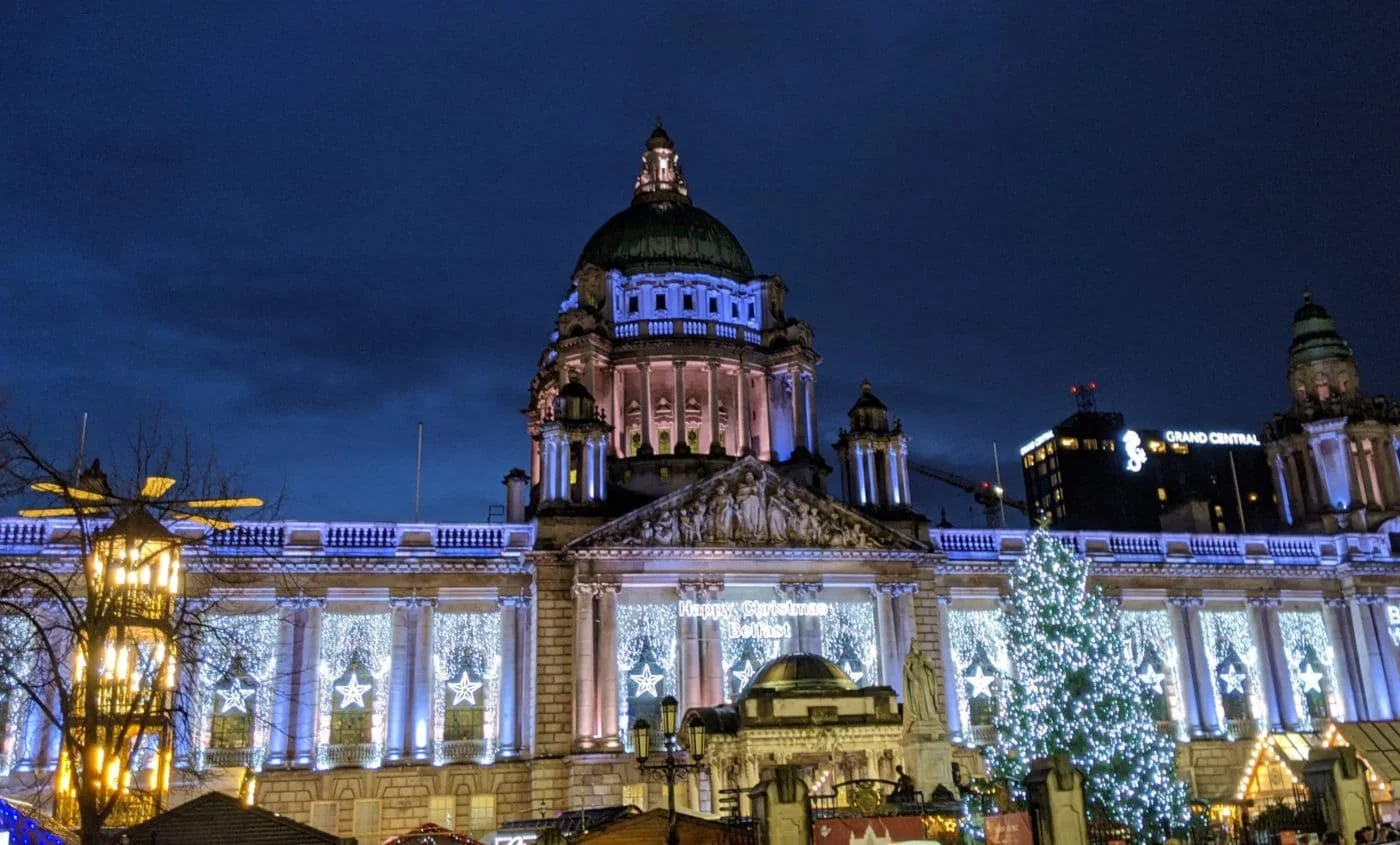
Day 2
We hiked the Cave Hill Trail, a favorite hike of the locals and a short bus ride from the center of Belfast. It is a challenging, circular route, beginning at Belfast Castle and ending at the top of “Napoleon’s Nose” the famous profile that is visible from almost everywhere in Belfast.
This hike is beautiful during any season although it can be a bit messy after a rainstorm. On the day that we hiked to the “nose”, it was perfect Indian summer weather and the view from the top over the whole of Belfast did not disappoint. We descended the backside over single track trails with evergreen views of the port of Belfast and the city.
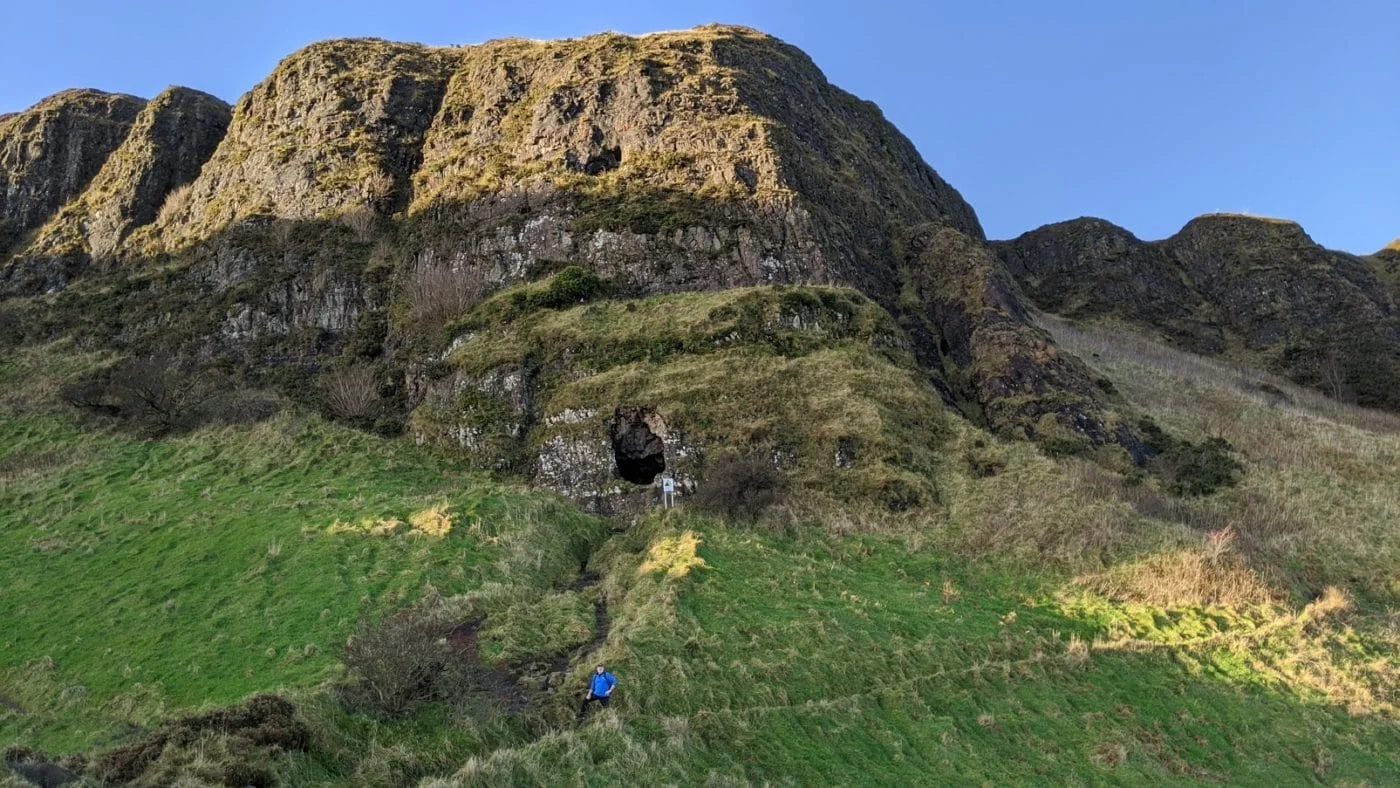
Day 3
We initially debated visiting the Titanic Museum thinking that it would simply be another tourist trap. That was until we caught a glimpse of the building that houses the museum which instantly became our motivation for going. Designed by world famous architect Eric Kuhne the museum celebrates five centuries of Belfast’s maritime legacy including the building of the RMS Titanic and her sister ship, the Olympic.
Once inside the museum we were impressed not only with the architecture but by the masterful curation of the numerous exhibits. Showcasing such topics as Ireland’s leading role in the global textile industry, its history of ship design, shipbuilding and steelworks to the building of the Titanic, every exhibit was flawlessly executed and with great interpretation. We completed our visit to the museum by having lunch at the original design studio of Harland and Wolff, the legendary firm that designed the Titanic.

Day 4
Driving the Causeway Coastal Route. There are not enough superlatives to describe the Giant’s Causeway and it’s sister attraction, the Carrick-a-Rede Rope Bridge on the north coast of Ireland.
Our first stop was the rope bridge, a narrow 66-foot-long swinging span suspended high above the choppy Atlantic waters originally built by salmon fishermen as a means of getting from the mainland to the adjacent Carrick A Rede island. Unfortunately for us the wind and weather that morning made crossing the bridge impossible. Crossing this iconic 300 plus year old bridge would have to wait another day as we moved on to the Giant’s Causeway.
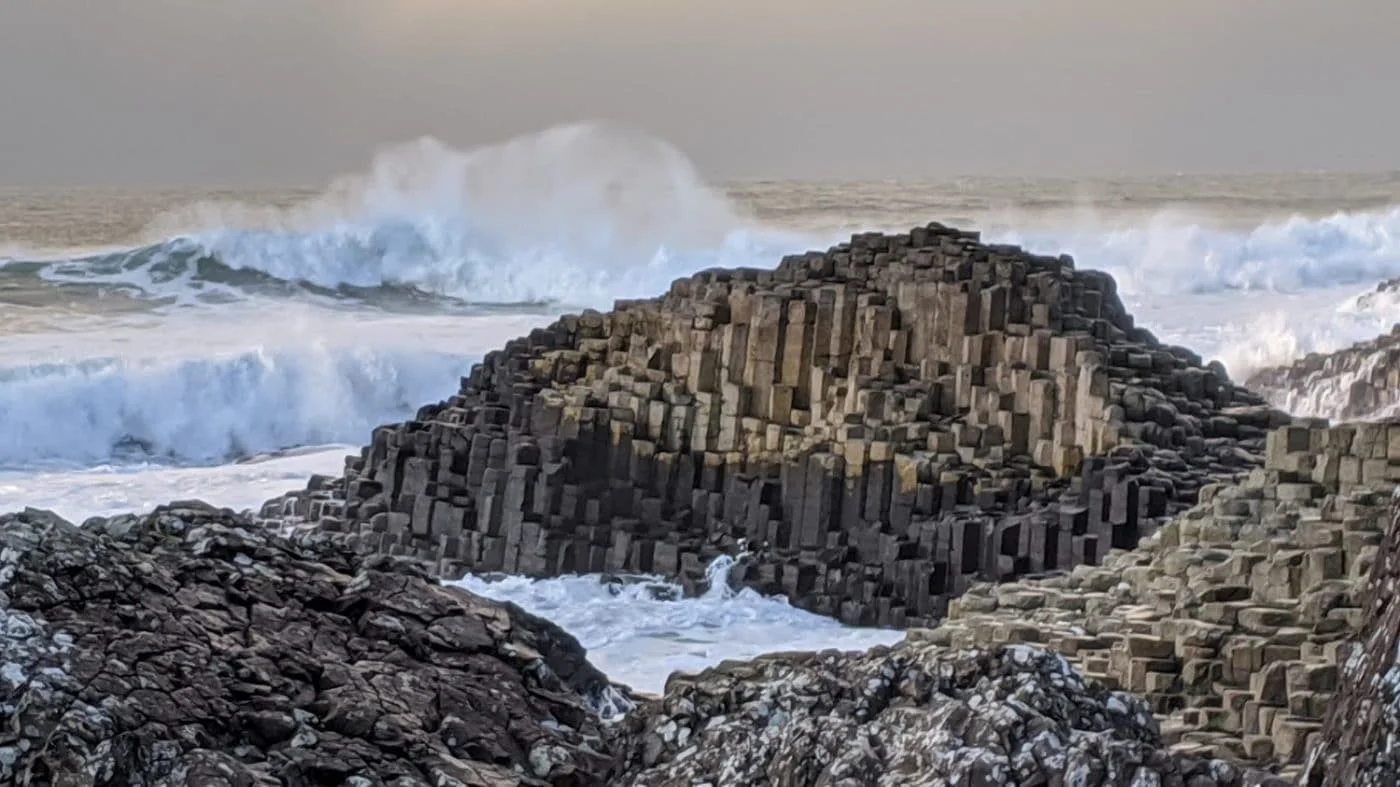
Arriving at the parking lot of the Giant’s Causeway, and with the sky suddenly opening, we could barely contain our excitement. It is not until you begin the long descent down the road to the beach and catch your first glimpse of the 40,000 interlocking basalt columns that your mind begins to unravel.
Pictures or videos can scarcely prepare you for what is referred to as the fourth greatest natural wonder in the United Kingdom. We simply could not fathom what we were seeing, from a distance, or close up. We spent the next two hours hopping from column-to-column taking countless photographs and marveling at set after set of enormous Atlantic waves crashing against the stones and the cliffs.
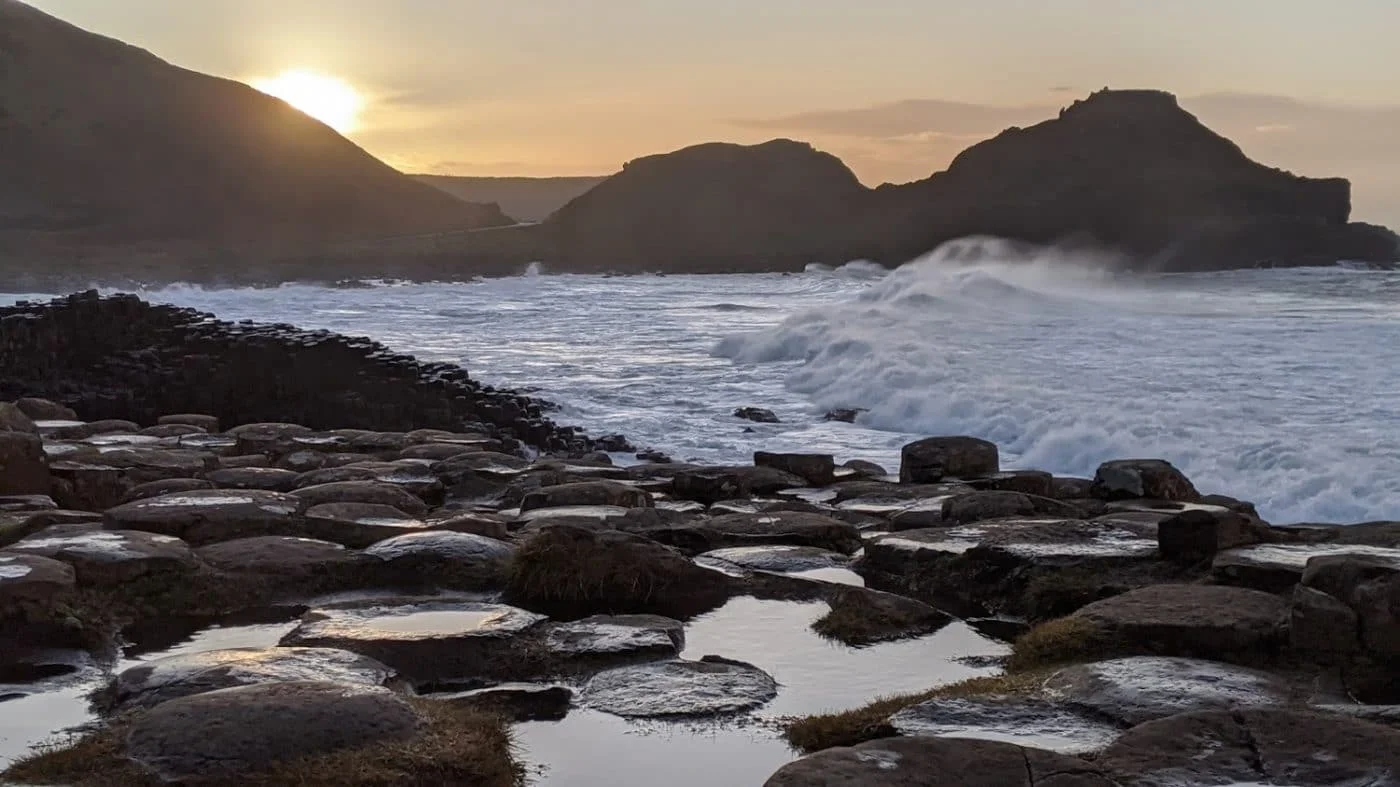
Day 5
After two days of hiking and sightseeing, it was time to explore the food and market scene in Belfast. There is no better place to start than the historic St. George’s Market on East Bridge Street not far from Belfast City Hall.
Built between 1890 and 1896 St. George’s is one of Belfast’s oldest and most visited attractions and a visit on any Friday will quickly help you understand why. Although the market is open on Saturday and Sunday as well it is Fridays that are mainly dedicated to food. With over 200 market stalls selling a wide variety of fruit, vegetables, meats, hot food, cakes and buns along with a large selection of fresh fish it is a feast for the senses. Fresh Norwegian salmon was our choice for dinner that evening.
Our next stop was the iconic Sawyers Deli which is also close to Belfast City Hall. Established in 1897, Sawers is Northern Ireland’s oldest deli and is described as an Aladdin’s cave of culinary delights. There are epicurean treats from around the world and the service is old school deli counter at its best. Between St. George’s and Sawers we were loaded up with all we needed to prepare a delicious meal at home that night.
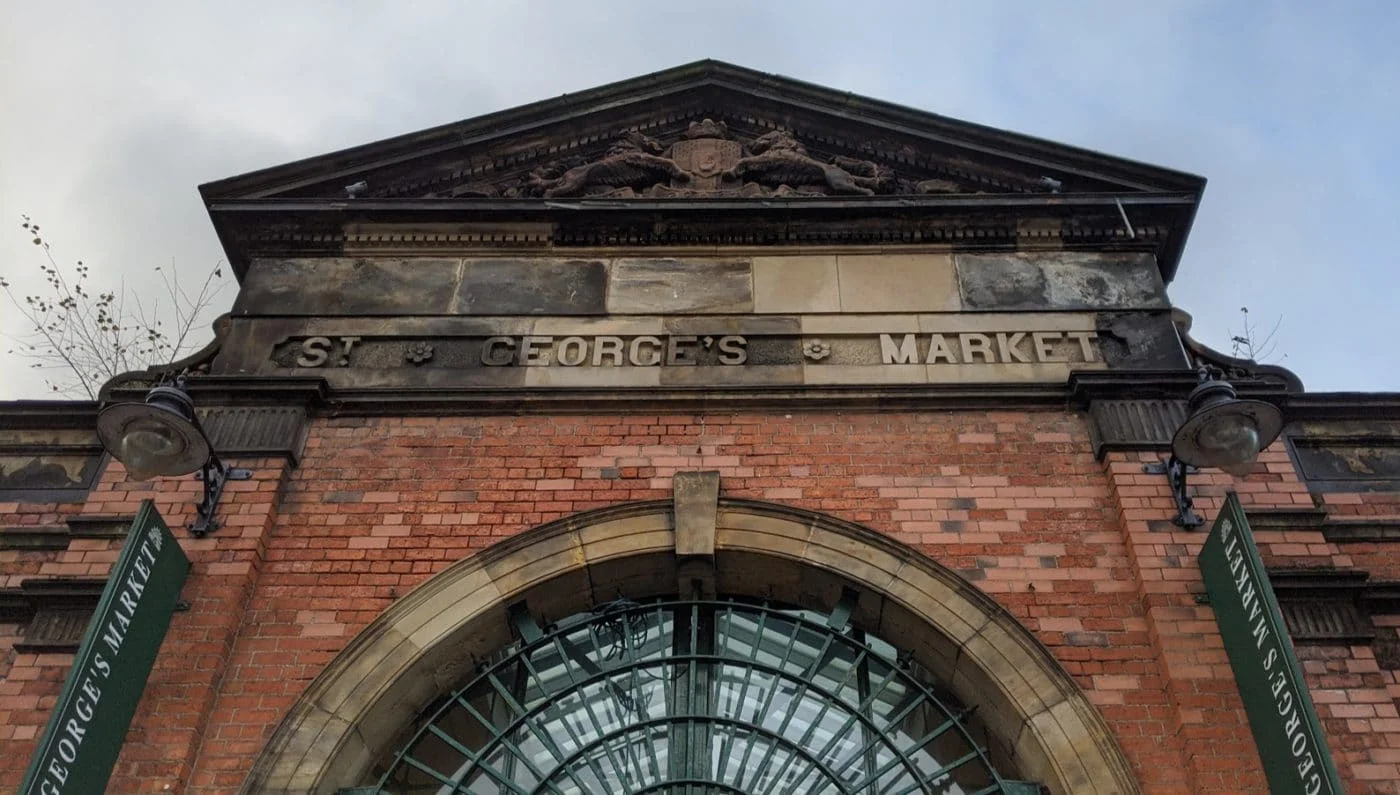
Day 6 | City Walk
No trip to a new city would be complete without searching out a well known park or botanic garden. In our case we chose the Belfast Botanic Garden, established in 1828 by the Belfast Botanic and Horticultural Society. With its magnificent Palm House and Tropical Ravine it is a tropical paradise in the middle of the city and houses some plants not found anywhere else in the world. It was a warm and steamy respite from the chilly winter and bustle of the big city.
From the garden we spent some time exploring the campus of Queen’s University, the 25th most international university in the world and a major player in multi-disciplinary innovation globally. With the afternoon lunch bell ringing we stopped in at Cutter’s Wharf, a riverside restaurant popular with locals and students. With our bellies full, and the sun breaking through the clouds, we spent the next 3 hours on a round trip walk along the Lagan towpath. Running for miles outside of Belfast this particular canal dates back to the 18th. century and through a variety of wetland, riverside meadows and mixed woodland.
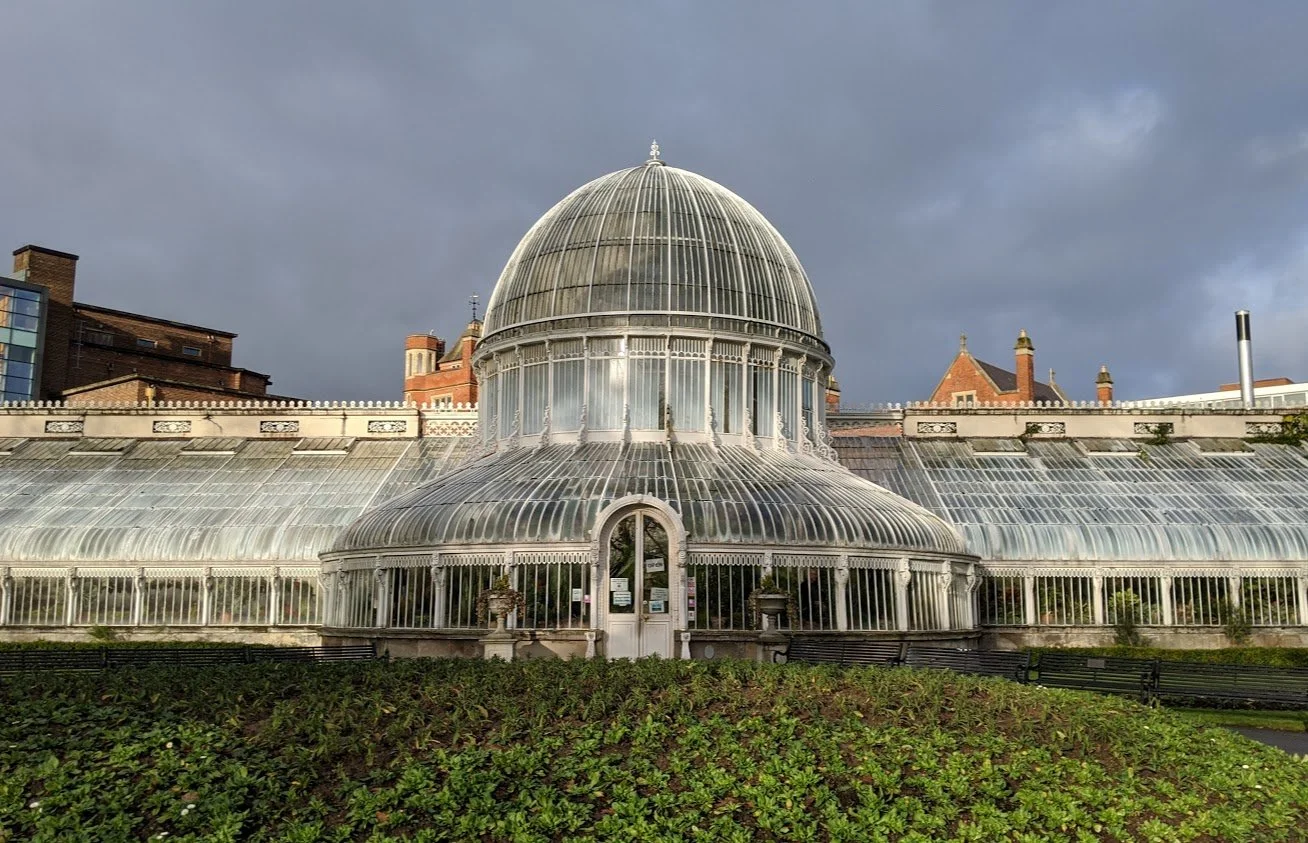
Day 7
Final thoughts
Belfast is a city with such deep and rich history that you would need to live there to be properly educated and to fully understand its true personality. What we came away with from our seven day visit was an appreciation for the kindness and friendliness of its people and a richer awareness of the many contributions Belfast, and Northern Ireland, have given the world.
TRAVEL TIP
The Causeway Coastal Route is one of the top five road trips in Europe, and when you drive it, you’ll know why. If renting a car or driving on the “other side of the road” is not an option for you we suggest taking a tour with one of the main tour companies. You may book the tour directly from the Office of Tourism in the city center. We are independent travelers who usually avoid organized tours but in this case, it made sense and we enjoyed the ride on a small van. The tour guide was friendly and we had all the time needed to explore each stop on our own.
